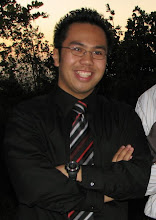 Above: The weirdest sign I saw on my May 2010 roadtrip. Talk about a one-stop tourist trap. Kissimmee, FL along Route 192.
Above: The weirdest sign I saw on my May 2010 roadtrip. Talk about a one-stop tourist trap. Kissimmee, FL along Route 192.It's been busy. There's no time to sit back and relax. Things aren't stopping. And for me, stopping could be dangerous.
BUT I LOVE THE BURN.
Week 6 here at my internal medicine rotation. I finally got the layout of my hospital down, know when and where to get coffee on my commute, what entrees at the cafeteria I should have/avoid, and even where the "secret rooms" are to do my work.
The importance of the IM rotation for anyone comes not in just getting to work in a hospitalist format, but also learning the art of medical thinking... something that I am still in awe of and want to master.
ONE CAN NEVER SAY A DIAGNOSIS IS CLEAR CUT.
It never is (unlike many medical dramas on TV put it). Its a common fallacy I run into. To me, Step 1 thinking is all about the "clear-cut" ness and classical cases, but coming into Step 2 and Step 3, things are completely different. If Step 1 thinking is taken into clinical medicine, fairly significant diagnoses can be missed, and one can head down the wrong road of management. Medicine kinda breaks the rules; it is unsafe to always think that X + Y + Z = A always. After a set of what we call "differential diagnoses" are given out (these are the lists of possible things that are going on), it is up to the clinician to rule out specific ones (especially ones with the most deadly prognoses along with the most common). A good set of differentials actually leads to better diagnostics and therefore, management.
Our tools to solving the patient's issues include the history we take on the patient, the physical exam, and laboratory tests. Each one of the tools has an advantage / disadvantage, usually measured in terms of cost (dollars and cents), usefulness of the info returned by the test, and time-to-benefit ratio (waiting 3 days for confirming something that might kill you in an hour isn't exactly a good thing). Some of the best clinicians I've seen at the hospital will perfectly balance all three by picking the right questions, exam procedures, and tests to confirm and rule out diagnoses (somehow they make the puzzle pieces fit). I'll admit, to use all these options efficiently is an art, and my mentors (attendings, seniors, and even the new interns) are always able to think of something I can't.
It's amazing that a lot of them say that the history is usually the best place to find out the diagnosis. However, even for the best clinicians, there are times where cases where the diagnosis is so unclear or takes an unexpected turn that a "Hail Mary" throw of tests needs to be done. But they're so good that this is usually last resort only.
The art of being a clinician is easy to put into words, but mastering it in practice is going to take more than 6 weeks to accomplish.



